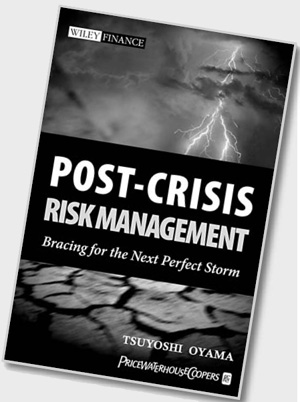Book review: Risk management following the crisis
This important book brings a fresh perspective to risk management frameworks in the aftermath of the recent global financial crisis. Written by a leading expert with PricewaterhouseCoopers, it argues that past reactions to crises are inappropriate in the new world of finance. Post-Crisis Risk Management identifies four primary issues that need to be solved: An inappropriate use of risk-expressing techniques and stress testing for risk communication; the regulatory and supervisory authorities' vague stance on the degree of stresses to be assumed by financial institutions; the financial institutions' and regulators' insufficient analysis of root causes of crisis and the lack of incentive mechanisms to discourage financial institutions from generating financial bubbles.

Based on these findings, the book argues for the macroprudential policies that consist of clarifying the burden-sharing of extreme stresses between banks and regulators, thereby minimizing the room for moral hazard. It also calls for the introduction of a proactive macroprudential policy to smooth cyclical effects. Further, the book argues for microregulatory policies that consist of establishing a stress evaluation technique that can support the implementation of macroregulatory policies. It also demands the introduction of a compensation scheme for senior managers of banks that encourages them to establish a long-term strategy. Finally, the book emphasizes the need for more policy coordination among Asian regulators so that they can take the initiative in establishing a new global standard in banking regulation.
Although many regulator and industrial reports on the lessons learned from the recent market turmoil have appeared recently, they still tend to be plagued by the silo-approach, discussing only specific issues independent of other important issues. Besides, they tend to be silent on the regulators' function to be addressed after the turmoil. This book covers all the issues that have been highlighted by the recent financial turmoil in a comprehensive and integrated way, and also steps into the area of how supervisors as well as banks appropriately share the responsibilities of absorbing additional stresses under the financial shock.















